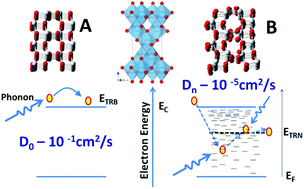Random nanowires of nickel doped TiO2 with high surface area and electron mobility for high efficiency dye-sensitized solar cells
Abstract
Mesoporous TiO2 with a large specific surface area (∼150 m2 g−1) is the most successful material in

* Corresponding authors
a National University of Singapore, Singapore
b Institute of Materials Research and Engineering, A*STAR (Agency for Science, Technology and Research), 3 Research Link, Singapore
c
Faculty of Industrial Sciences and Technology, Universiti Malaysia Pahang, 26300 Kuantan, Malaysia
E-mail:
rjose@ump.edu.my
Mesoporous TiO2 with a large specific surface area (∼150 m2 g−1) is the most successful material in

 Please wait while we load your content...
Something went wrong. Try again?
Please wait while we load your content...
Something went wrong. Try again?
P. S. Archana, E. Naveen Kumar, C. Vijila, S. Ramakrishna, M. M. Yusoff and R. Jose, Dalton Trans., 2013, 42, 1024 DOI: 10.1039/C2DT31775C
To request permission to reproduce material from this article, please go to the Copyright Clearance Center request page.
If you are an author contributing to an RSC publication, you do not need to request permission provided correct acknowledgement is given.
If you are the author of this article, you do not need to request permission to reproduce figures and diagrams provided correct acknowledgement is given. If you want to reproduce the whole article in a third-party publication (excluding your thesis/dissertation for which permission is not required) please go to the Copyright Clearance Center request page.
Read more about how to correctly acknowledge RSC content.
 Fetching data from CrossRef.
Fetching data from CrossRef.
This may take some time to load.
Loading related content
